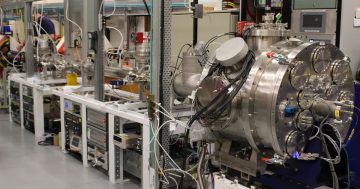
ANU Heavy Ion Accelerator Facility. Photo: James Coleman
It has towered over the surrounding buildings at the Australian National University (ANU) for close to 50 years, a monolith of steel with no windows and no clues as to what might be inside.
It’s the Heavy Ion Accelerator Facility (HIAF), and I know what you’re thinking: a what?
Supported by National Collaborative Research Infrastructure of Australia (NCRIS) of the Australian Government, the HIAF is housed in a 40-metre tall tower and the largest and most powerful ion accelerator in Australia. It has been used to unveil ancient climate records, discover evidence of nearby supernovae, test new materials for satellite radiation shielding, and get exquisite view of reactions that create new elements in the periodic table. It also forms an integral part of Australia’s hands-on training in nuclear physics.
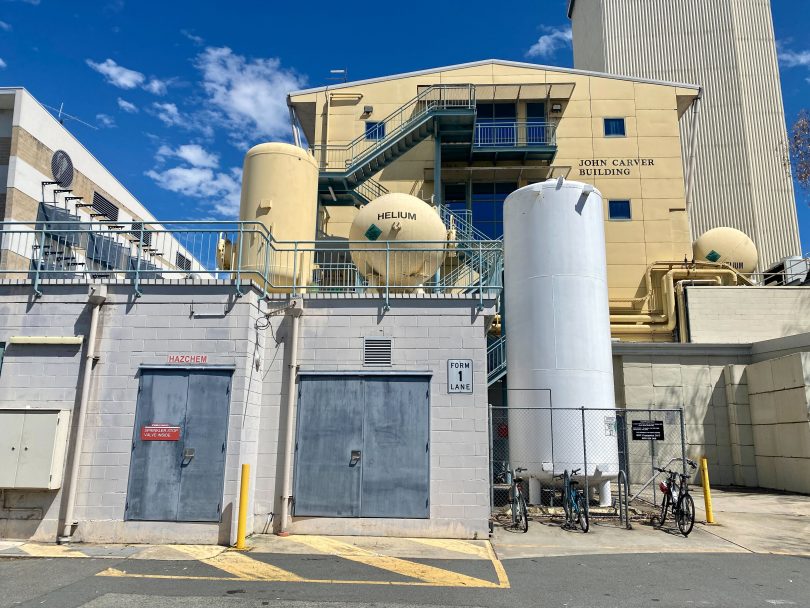
Where it all happens, at the ANU Research School of Physics. Photo: James Coleman.
Professor Mahananda Dasgupta from the ANU Research School of Physics is here to give me the tour, and we start with the obvious: what does it do?
“Essentially, a heavy-ion accelerator enables us to look inside an atom,” she begins. “An electron microscope doesn’t offer enough resolution to access the nucleus of an atom.”
Here’s the general crash course. Atoms are made up of three basic components – protons, neutrons and electrons. Protons are positively charged and define which chemical element the atom belongs to. Protons exist with neutral neutrons in the nucleus, the heart of the atom,
which has negative electrons orbiting around it. Removing electrons would give an atom an overall positive charge; more electrons, a negative charge. A charged atom is called an ion.
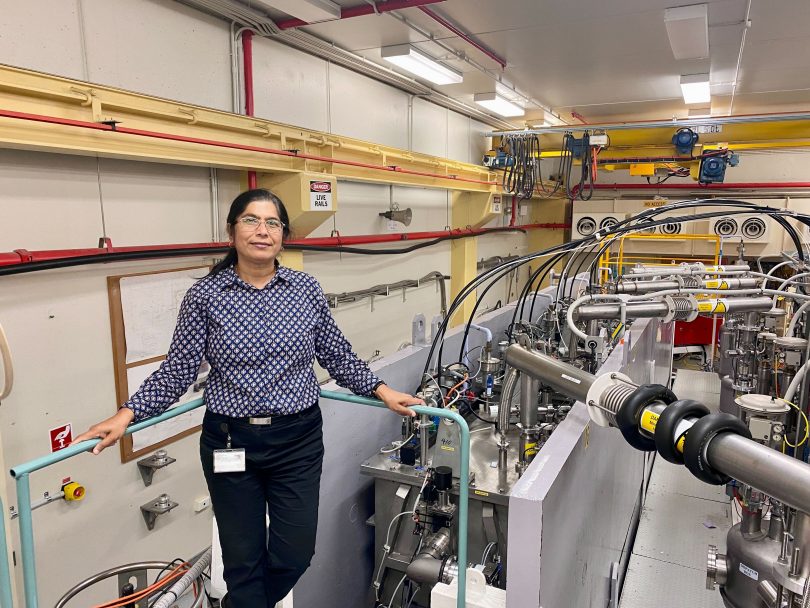
ANU Research School of Physics Professor Mahananda Dasgupta. Photo: James Coleman.
We humans can see objects because of ‘electromagnetic radiation’, more commonly known as ‘light’. The more energy the radiation has, the shorter the wavelength becomes, making it more powerful and therefore more penetrating. And different kinds of radiation have different applications.
“This is why if I want to see a person as a whole body, I use natural light,” Professor Dasgupta says. “If I want to see the bones inside, I use X-rays.”
As the name implies, electron microscopes work by firing a beam of electrons at an object. The heavy-ion accelerator goes a step further by accelerating a beam of charged ions up to 10 per cent of the speed of light. These ions have such high energies (small wavelengths) that researchers are able to ‘see’ into the heart of what makes up everything in the visible universe – the atom’s nucleus.
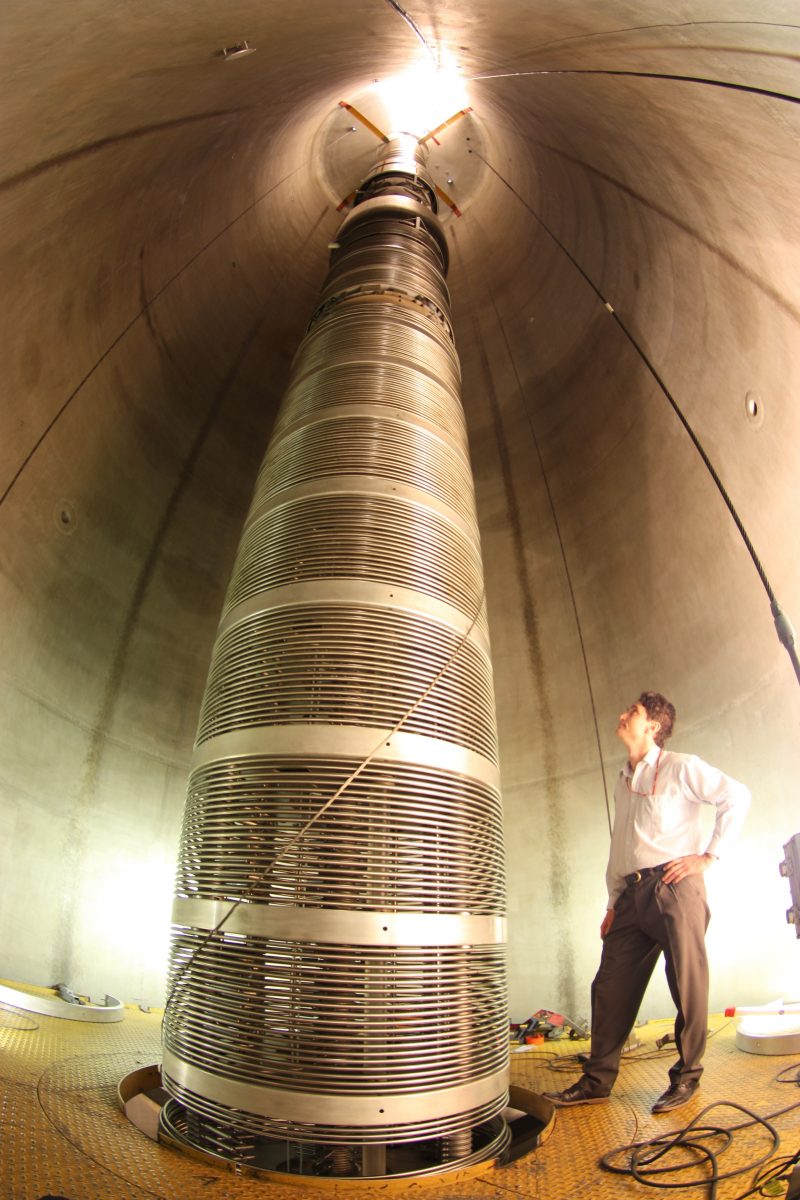
Inside the HIAF. Photo: ANU.
As for the ‘heavy’ part in the name, that means it can accelerate ions of elements from protons to as heavy as plutonium.
In the HIAF, negative ions are created and injected at the top of the accelerator. The rest is a game of polar opposites.
A terminal in the middle of the accelerator is positively charged, attracting the negative ions through the first stage of the accelerator at great speeds. Near the terminal the ions encounter a thin foil which strips them of their negative electrons, making them positive. These are then repelled from the positive terminal, causing them to rush towards the exit point, after which they are guided through beam lines towards the experiment stations by a series of magnets.
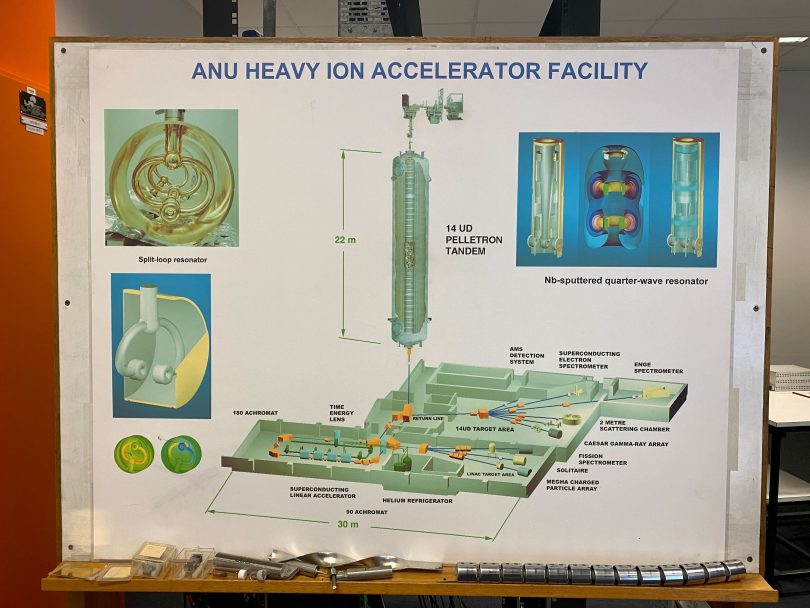
A map of the ANU Heavy Ion Accelerator Facility. Photo: James Coleman.
“By this time, the particle will be travelling up to 30,000 kilometres per second,” Professor Dasgupta says.
It’s not something you can visibly see, but she says that if you “put graph paper in its path it will burn a hole”.
From here, the beamline is directed through a variety of magnets and smaller accelerators, altering the wavelength according to the parameters researchers need for their specific experiment.
So what is all this used for?
Quite a lot, as it turns out, and with a range of applications environment, resources, new materials, medical detectors, and space technologies.
The HIAF is used to study the fundamental quantum mechanics of nuclei and what happens when they collide. High-energy ion beams can create nanoscale pores in materials that can be used for water treatment. The HIAF can also be used to understand soil erosion by finding minute traces of radioactive isotopes in the environment. And it can explore how elements are made in stars and help in the search for dark matter.
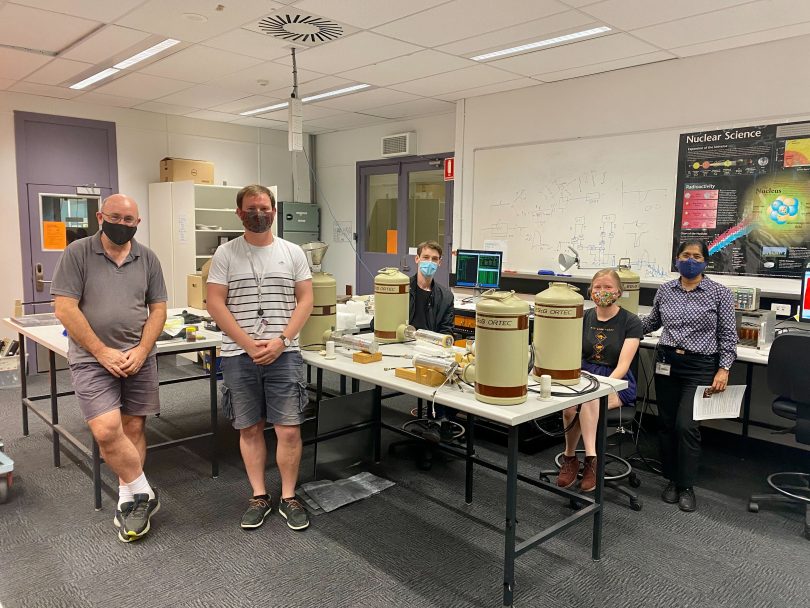
ANU Research School of Physics provides hands-on nuclear training. Photo: James Coleman.
Training in nuclear science begins in high school as part of Australia’s STEM (Science, Technology, Engineering, and
Mathematics) program. The ANU Department of Nuclear Physics and Accelerator Applications trains not only undergraduates and post-graduates, but also invites students from schools across Canberra and beyond to visit the HIAF facility and see nuclear physics in action.
Professor Gregory Lane is convenor of the Master of Science in Nuclear Science program, and leads the STEM education program for the Department. He says they interact with upwards of 500 students a year.
“I recorded a series of lectures that are used in high-school education and classroom teaching. Schools around the country can use these lectures without having to be experts in nuclear physics themselves. It’s not just training in the academic sphere, it’s also training people who are able to go out and make it happen.”
Not only is the HIAF a mysterious building, but it turns out it’s also an important one for the nation.











